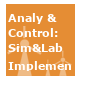Webinar Objectives: Provide overview of common DER technologies characteristics. Detail how implementation of the interconnection and interoperability standard IEEE 1547-2018 is changing how DER interact with the bulk power system and distribution grid. Outline tools, methods, and constraints when analyzing DER interconnections. Discuss how DER is reshaping aspects of planning and operations. Highlight emerging trends for DER such as non-wires alternatives, market participation, and vehicle-to-grid.
About the Presenter: Patrick Dalton is currently a manager of Distributed Energy Resources at ICF. In this role he focuses on supporting clients in developing solutions to address DER impacts on utility planning and operations across the U.S. Patrick has eleven years of distribution engineering experience at Xcel Energy where he most recently led a team responsible for DER integration. He supported drafting of the recently approved Minnesota statewide interconnection process and technical standards. He is an active member of industry standard working groups related to DER interconnection, interoperability, and energy storage including IEEE 1547-2018, IEEE P1547.1, IEEE P1547.2 and IEEE P1547.9. Patrick participated in efforts to address impacts of DER on the bulk electric system, including the NERC System Planning Impacts from DER (SPIDER) working group and MISO guidelines development for DER IEEE 1547 implementation. He is a licensed professional engineer in Minnesota. Patrick recently joined the University of St. Thomas in an adjunct faculty role.
A certificate of 3 PDH will be email to participants after the event.
AGENDA
Integrating DER with the Grid: Technology, Interconnection, and Supporting Practices
Overview of technologies
- Definitions of DER (focus is on DER sources though some definitions include load side resources such as energy efficiency and demand response)
- Inverter-based characteristics
- Rotating machine characteristics
- Energy storage
DER Capabilities and Functions - Primer on IEEE 1547-2018
- Performance categories
- Required capabilities
- Real and reactive power functions for normal Conditions
- Voltage and frequency mandatory ride-through and tripping in response to abnormal condition
- Return to service and restore output characteristics
- Interoperability (communication protocols, common information models, cyber security) Intentional islands (a.k.a. microgrids)
Interconnection Studies
- Tools and methods
- Thermal analysis
- Voltage analysis - steady state and rapid voltage change
- Protection analysis
- Grounding
- Transmission and bulk system considerations
- Solutions
Integrating DER into Planning Frameworks
- DER forecasting
- Historic load data - separating load and generation
- Impacts on normal and contingency capacity planning]
- Inclusion into Integrated Distribution Planning (hosting capacity, non-wires alternatives) and Integrated Resource Planning (forecasting)
Operational considerations
- Considerations for operating DER during planned and emergency conditions
- Monitoring and Control
- ADMS/DERMS
- Impact on VVO and FLISR
Emerging Topics
- Non-Wires Alternatives
- Coordination at the T&D Interface
- DER Markets - implementation of FERC 841
- Power Control Systems - UL CRD
- Vehicle to grid (V2G) and building to grid (B2G)




